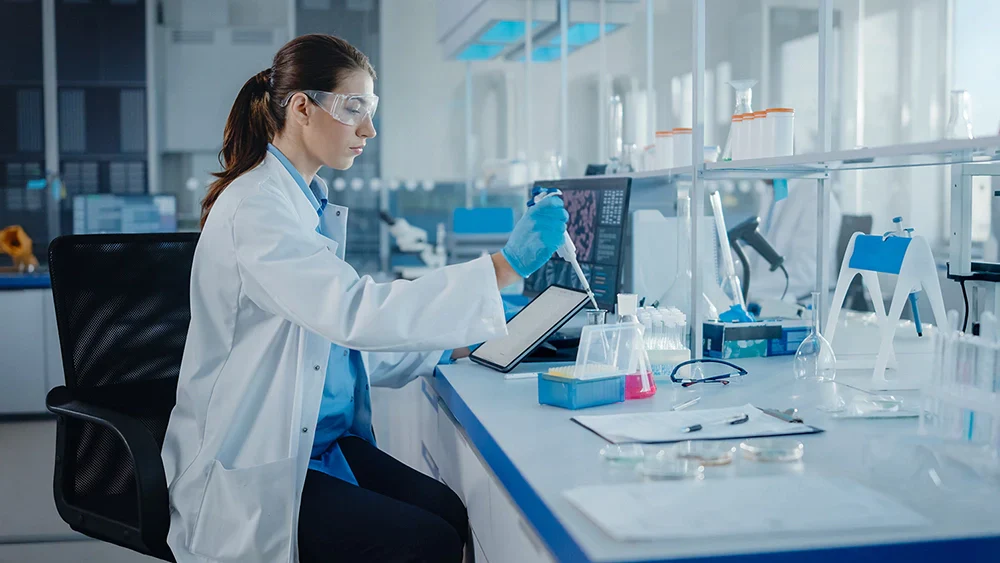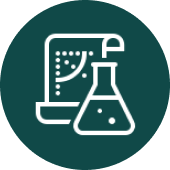1 Panche, A. N., Diwan, A. D., & Chandra, S. R. (2016). Flavonoids: an overview. Journal of nutritional science, 5, e47.
2 Al-Ishaq, R. K., Abotaleb, M., Kubatka, P., Kajo, K., & Büsselberg, D. (2019). Flavonoids and Their Anti-Diabetic Effects: Cellular Mechanisms and Effects to Improve Blood Sugar Levels. Biomolecules, 9(9), 430.
3 Li, Y., Yao, J., Han, C., Yang, J., Chaudhry, M. T., Wang, S., Liu, H., & Yin, Y. (2016). Quercetin, Inflammation and Immunity. Nutrients, 8(3), 167.
4 PubChem. (2021). Quercetin. Retrieved 28 August 2021, from https://pubchem.ncbi.nlm.nih.gov/compound/Quercetin
5 PubChem. (2021). Quercetin dihydrate. Retrieved 29 August 2021, from https://pubchem.ncbi.nlm.nih.gov/compound/5284452
6 Dabeek, W. M., & Marra, M. V. (2019). Dietary Quercetin and Kaempferol: Bioavailability and Potential Cardiovascular-Related Bioactivity in Humans. Nutrients, 11(10), 2288.
7 Jaffe R, Mani J. Chapter 29 - Polyphenolics Evoke Healing Responses: Clinical Evidence and Role of Predictive Biomarkers. Polyphenols: Mechanisms of Action in Human Health and Disease. January 2018:403-413.
8 Guo, Y., Mah, E., Davis, C. G., Jalili, T., Ferruzzi, M. G., Chun, O. K., & Bruno, R. S. (2013). Dietary fat increases quercetin bioavailability in overweight adults. Molecular nutrition & food research, 57(5), 896–905.
9 Jafarinia, M., Sadat Hosseini, M., Kasiri, N., Fazel, N., Fathi, F., Ganjalikhani Hakemi, M., & Eskandari, N. (2020). Quercetin with the potential effect on allergic diseases. Allergy, asthma, and clinical immunology : official journal of the Canadian Society of Allergy and Clinical Immunology, 16, 36.
10 Drugs and Lactation Database (LactMed) [Internet]. (2021). Bethesda (MD): National Library of Medicine (US). Available from: https://www.ncbi.nlm.nih.gov/books/NBK501922/
11 Eastland Herb. (2018). Eastland Herb - Chinese Herbal Medicine: Materia Medica and Formula & Strategies (4.3). [mobile app]. App store. https://apps.apple.com/us/app/eastland-herb-chinese-medicine/id737380894.
12 Mlcek, J., Jurikova, T., Skrovankova, S., & Sochor, J. (2016). Quercetin and Its Anti-Allergic Immune Response. Molecules (Basel, Switzerland), 21(5), 623.
13 Karuppagounder, V., Arumugam, S., Thandavarayan, R. A., Sreedhar, R., Giridharan, V. V., & Watanabe, K. (2016). Molecular targets of quercetin with anti-inflammatory properties in atopic dermatitis. Drug discovery today, 21(4), 632–639.
14 Weng, Z., Zhang, B., Asadi, S., Sismanopoulos, N., Butcher, A., Fu, X., Katsarou-Katsari, A., Antoniou, C., & Theoharides, T. C. (2012). Quercetin is more effective than cromolyn in blocking human mast cell cytokine release and inhibits contact dermatitis and photosensitivity in humans. PloS one, 7(3), e33805.
15 Juríková, T., Mlˇcek, J., Sochor, J., Hegedusová, A. (2015). Polyphenols and their mechanism of action in allergic immune response. Global Journal of Allergy, 1, 037–039.
16 Chen, H., Lu, C., Liu, H., Wang, M., Zhao, H., Yan, Y., & Han, L. (2017). Quercetin ameliorates imiquimod-induced psoriasis-like skin inflammation in mice via the NF-κB pathway. International immunopharmacology, 48, 110–117.
17 Huang, R. Y., Yu, Y. L., Cheng, W. C., OuYang, C. N., Fu, E., & Chu, C. L. (2010). Immunosuppressive effect of quercetin on dendritic cell activation and function. Journal of immunology (Baltimore, Md. : 1950), 184(12), 6815–6821.
18 Heinz, S. A., Henson, D. A., Austin, M. D., Jin, F., & Nieman, D. C. (2010). Quercetin supplementation and upper respiratory tract infection: A randomized community clinical trial. Pharmacological research, 62(3), 237–242.
19 Nieman, D. C., Henson, D. A., Gross, S. J., Jenkins, D. P., Davis, J. M., Murphy, E. A., Carmichael, M. D., Dumke, C. L., Utter, A. C., McAnulty, S. R., McAnulty, L. S., & Mayer, E. P. (2007). Quercetin reduces illness but not immune perturbations after intensive exercise. Medicine and science in sports and exercise, 39(9), 1561–1569.
20 Dabbagh-Bazarbachi, H., Clergeaud, G., Quesada, I. M., Ortiz, M., O'Sullivan, C. K., & Fernández-Larrea, J. B. (2014). Zinc ionophore activity of quercetin and epigallocatechin-gallate: from Hepa 1-6 cells to a liposome model. Journal of agricultural and food chemistry, 62(32), 8085–8093.
21 Vinson, J. A., & Bose, P. (1988). Comparative bioavailability to humans of ascorbic acid alone or in a citrus extract. The American journal of clinical nutrition, 48(3), 601–604.
22 Boots, A. W., Kubben, N., Haenen, G. R., & Bast, A. (2003). Oxidized quercetin reacts with thiols rather than with ascorbate: implication for quercetin supplementation. Biochemical and biophysical research communications, 308(3), 560–565.
23 Bors, W., Michel, C., & Schikora, S. (1995). Interaction of flavonoids with ascorbate and determination of their univalent redox potentials: a pulse radiolysis study. Free radical biology & medicine, 19(1), 45–52.
24 Brüll, V., Burak, C., Stoffel-Wagner, B., Wolffram, S., Nickenig, G., Müller, C., Langguth, P., Alteheld, B., Fimmers, R., Naaf, S., Zimmermann, B. F., Stehle, P., & Egert, S. (2015). Effects of a quercetin-rich onion skin extract on 24 h ambulatory blood pressure and endothelial function in overweight-to-obese patients with (pre-)hypertension: a randomised double-blinded placebo-controlled cross-over trial. The British journal of nutrition, 114(8), 1263–1277.
25 Dower, J. I., Geleijnse, J. M., Gijsbers, L., Zock, P. L., Kromhout, D., & Hollman, P. C. (2015). Effects of the pure flavonoids epicatechin and quercetin on vascular function and cardiometabolic health: a randomized, double-blind, placebo-controlled, crossover trial. The American journal of clinical nutrition, 101(5), 914–921.
26 Loke, W. M., Hodgson, J. M., Proudfoot, J. M., McKinley, A. J., Puddey, I. B., & Croft, K. D. (2008). Pure dietary flavonoids quercetin and (-)-epicatechin augment nitric oxide products and reduce endothelin-1 acutely in healthy men. The American journal of clinical nutrition, 88(4), 1018–1025.
27 Xu, D., Hu, M. J., Wang, Y. Q., & Cui, Y. L. (2019). Antioxidant Activities of Quercetin and Its Complexes for Medicinal Application. Molecules (Basel, Switzerland), 24(6), 1123.
28 Khorshidi, M., Moini, A., Alipoor, E., Rezvan, N., Gorgani-Firuzjaee, S., Yaseri, M., & Hosseinzadeh-Attar, M. J.. (2018). The effects of quercetin supplementation on metabolic and hormonal parameters as well as plasma concentration and gene expression of resistin in overweight or obese women with polycystic ovary syndrome. Phytotherapy research : PTR, 32(11), 2282–2289.
29 Shoskes, D. A., Zeitlin, S. I., Shahed, A., & Rajfer, J. (1999). Quercetin in men with category III chronic prostatitis: a preliminary prospective, double-blind, placebo-controlled trial. Urology, 54(6), 960–963.
30 Natural Medicines. (2021, August 28). Quercetin [monograph]. http://naturalmedicines.therapeuticresearch.com
31 Ahrens, M. J., & Thompson, D. L. (2013). Effect of emulin on blood glucose in type 2 diabetics. Journal of medicinal food, 16(3), 211–215.
32 Larson, A., Witman, M. A., Guo, Y., Ives, S., Richardson, R. S., Bruno, R. S., Jalili, T., & Symons, J. D. (2012). Acute, quercetin-induced reductions in blood pressure in hypertensive individuals are not secondary to lower plasma angiotensin-converting enzyme activity or endothelin-1: nitric oxide. Nutrition research (New York, N.Y.), 32(8), 557–564.
33 Edwards, R. L., Lyon, T., Litwin, S. E., Rabovsky, A., Symons, J. D., & Jalili, T. (2007). Quercetin reduces blood pressure in hypertensive subjects. The Journal of nutrition, 137(11), 2405–2411.
34 Choi, J. S., Choi, B. C., & Choi, K. E. (2004). Effect of quercetin on the pharmacokinetics of oral cyclosporine. American journal of health-system pharmacy : AJHP : official journal of the American Society of Health-System Pharmacists, 61(22), 2406–2409.
35 Bedada, S. K., & Neerati, P. (2018). Evaluation of the effect of quercetin treatment on CYP2C9 enzyme activity of diclofenac in healthy human volunteers. Phytotherapy research : PTR, 32(2), 305–311.
36 Zhao, Q., Wei, J., & Zhang, H. (2019). Effects of quercetin on the pharmacokinetics of losartan and its metabolite EXP3174 in rats. Xenobiotica; the fate of foreign compounds in biological systems, 49(5), 563–568.
37 Wu, L. X., Guo, C. X., Chen, W. Q., Yu, J., Qu, Q., Chen, Y., Tan, Z. R., Wang, G., Fan, L., Li, Q., Zhang, W., & Zhou, H. H. (2012). Inhibition of the organic anion-transporting polypeptide 1B1 by quercetin: an in vitro and in vivo assessment. British journal of clinical pharmacology, 73(5), 750–757.
38 Bhutani, P., Rajanna, P. K., & Paul, A. T. (2020). Impact of quercetin on pharmacokinetics of quetiapine: insights from in-vivo studies in wistar rats. Xenobiotica; the fate of foreign compounds in biological systems, 50(12), 1483–1489.
39 Duan, K. M., Wang, S. Y., Ouyang, W., Mao, Y. M., & Yang, L. J. (2012). Effect of quercetin on CYP3A activity in Chinese healthy participants. Journal of clinical pharmacology, 52(6), 940–946.










